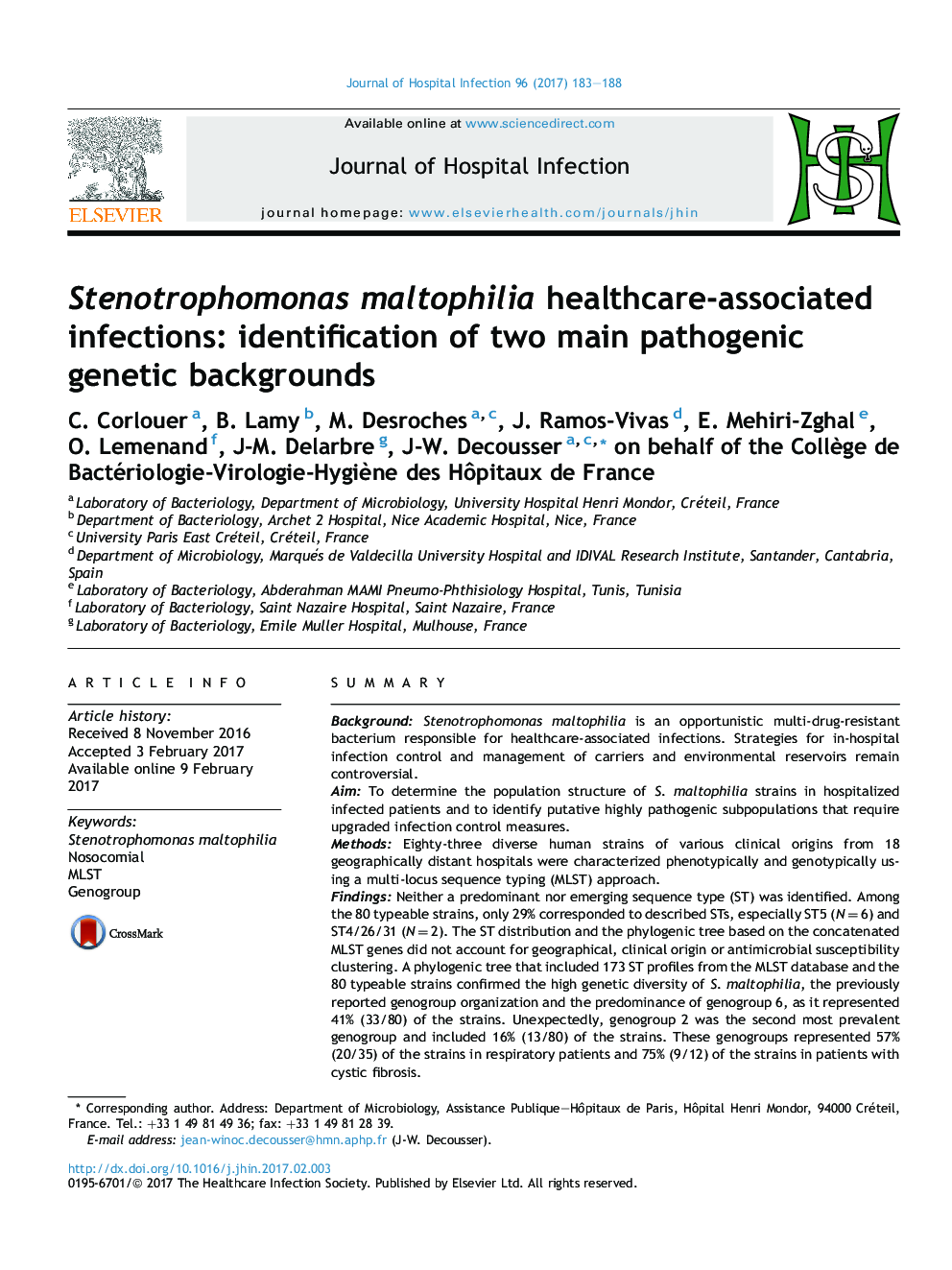| کد مقاله | کد نشریه | سال انتشار | مقاله انگلیسی | نسخه تمام متن |
|---|---|---|---|---|
| 5668222 | 1407892 | 2017 | 6 صفحه PDF | دانلود رایگان |

SummaryBackgroundStenotrophomonas maltophilia is an opportunistic multi-drug-resistant bacterium responsible for healthcare-associated infections. Strategies for in-hospital infection control and management of carriers and environmental reservoirs remain controversial.AimTo determine the population structure of S. maltophilia strains in hospitalized infected patients and to identify putative highly pathogenic subpopulations that require upgraded infection control measures.MethodsEighty-three diverse human strains of various clinical origins from 18 geographically distant hospitals were characterized phenotypically and genotypically using a multi-locus sequence typing (MLST) approach.FindingsNeither a predominant nor emerging sequence type (ST) was identified. Among the 80 typeable strains, only 29% corresponded to described STs, especially ST5 (N = 6) and ST4/26/31 (N = 2). The ST distribution and the phylogenic tree based on the concatenated MLST genes did not account for geographical, clinical origin or antimicrobial susceptibility clustering. A phylogenic tree that included 173 ST profiles from the MLST database and the 80 typeable strains confirmed the high genetic diversity of S. maltophilia, the previously reported genogroup organization and the predominance of genogroup 6, as it represented 41% (33/80) of the strains. Unexpectedly, genogroup 2 was the second most prevalent genogroup and included 16% (13/80) of the strains. These genogroups represented 57% (20/35) of the strains in respiratory patients and 75% (9/12) of the strains in patients with cystic fibrosis.ConclusionBeyond MLST, the over-representation of some genogroups among strains responsible for healthcare-associated infections was confirmed. Genogrouping affiliation is recommended to implement infection control measures selectively for the most pathogenic strains isolated from patient or environmental reservoirs.
Journal: Journal of Hospital Infection - Volume 96, Issue 2, June 2017, Pages 183-188